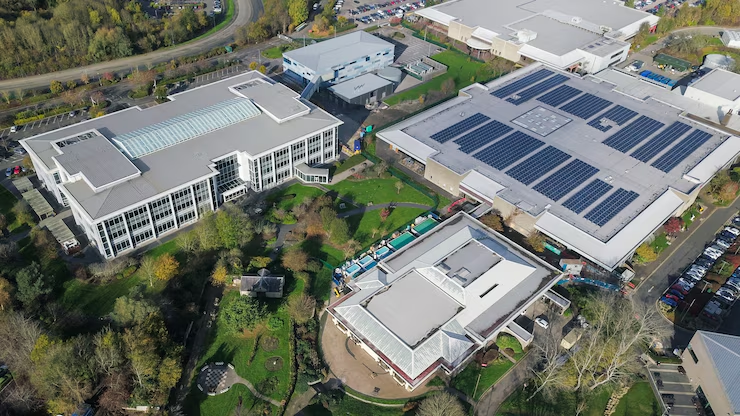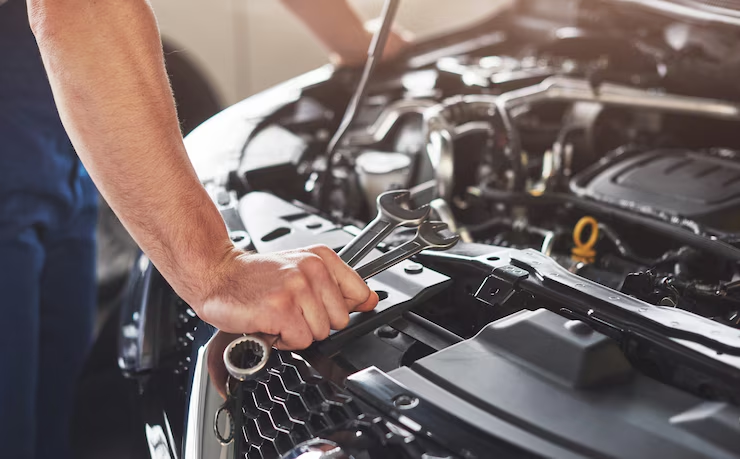
Where Are Hyundai Cars Made?
Hyundai cars are manufactured in several locations around the world, reflecting the brand’s global reach. The primary production facilities are located in South Korea, while additional plants exist in countries like the United States, Czech Republic, China, India, and Brazil. This widespread manufacturing network allows Hyundai to efficiently supply vehicles to various markets and respond to local demands.
In South Korea, the Ulsan plant stands out as one of the largest automotive production facilities globally. Here, a significant portion of Hyundai’s vehicles, including popular models, are produced. The company also operates a significant assembly plant in Montgomery, Alabama, which builds vehicles for the North American market.
Hyundai’s strategy includes not only local production to minimize shipping costs and tariffs but also a commitment to using regional suppliers. This approach strengthens local economies while ensuring that the vehicles meet the specific needs and preferences of consumers in different regions.
Global Manufacturing Locations of Hyundai

Hyundai has a diverse range of manufacturing facilities around the world. These locations enable the company to meet global demand efficiently.
Major Manufacturing Plants:
- South Korea: Hyundai’s primary production hub. Key facilities include Ulsan and Asan.
- United States: The plant in Montgomery, Alabama, produces several models, including the Sonata and Elantra.
- China: Multiple factories produce various models, catering to the local market.
- India: The Chennai facility focuses on numerous models for both domestic and international markets.
- Turkey: The Izmit plant manufactures models like the i20 and serves European customers.
Additional Sites:
- Russia: A facility in Saint Petersburg mainly produces vehicles for the Russian market.
- Czech Republic: Hyundai operates a plant in Nošovice, which produces vehicles for European distribution.
- Vietnam: A recent manufacturing facility aims to strengthen Hyundai’s presence in Southeast Asia.
Hyundai aims to align production with regional demands and maintain quality across its global operations. These strategic locations support its competitiveness in the automotive market.
The Manufacturing Process

Hyundai’s manufacturing process combines stringent quality control measures and advanced technology to produce reliable vehicles. This approach ensures that each car meets high standards while also integrating innovations that enhance efficiency.
Quality Control Measures
Quality control is integral to Hyundai’s manufacturing process. The company employs a multi-layered quality assurance approach, which begins with rigorous inspections of raw materials. Parts are tested for durability and performance before assembly.
During vehicle assembly, employees follow detailed checklists to ensure adherence to specifications. Visual inspections are performed at various stages, and vehicles undergo extensive testing on the production line. This includes road tests to assess handling and safety features.
Final inspections involve a comprehensive assessment of mechanical and aesthetic aspects. Any discrepancies are addressed before the car leaves the factory. This commitment to quality helps Hyundai maintain high customer satisfaction and reliability ratings.
Technological Advancements
Hyundai leverages cutting-edge technology in its manufacturing processes. Automation plays a significant role, with robotics assisting in repetitive tasks, improving precision in assembly.
Innovations such as computer-aided design (CAD) and computer numerical control (CNC) machining allow for high accuracy in part production. These technologies enhance efficiency and reduce waste.
Additionally, Hyundai has adopted Industry 4.0 principles. This includes the use of Internet of Things (IoT) devices, which provide real-time data on production metrics. Such advancements enable continuous improvement and optimization of manufacturing output, ensuring Hyundai remains competitive in the automotive market.
Hyundai’s Market Presence
Hyundai has established a strong foothold in various markets, particularly in the United States. Its commitment to innovation and quality has contributed to its growing popularity. The company’s strategic international expansion has also enhanced its presence globally.
Popularity in the United States
In the U.S., Hyundai has gained significant market share, ranking among the top automotive brands. Factors such as affordability, reliability, and extensive warranty offerings have driven consumer interest.
Hyundai’s models, including the Elantra and Santa Fe, cater to different buyer preferences. The brand has been successful in attracting younger buyers, boosting its visibility in a competitive landscape.
In addition, the popularity of leasing options makes Hyundai accessible, even for those with bad credit. Many dealerships offer flexible leasing terms, allowing a wider range of consumers to consider Hyundai vehicles.
Expansion and International Sales
Hyundai’s international strategy focuses on expanding its manufacturing capabilities across various regions. The company has production facilities in countries like Korea, the U.S., and Turkey, which enhances its operational flexibility.
This global footprint enables Hyundai to cater to local markets effectively. As a result, its vehicles are tailored to meet regional preferences while complying with local regulations.
Hyundai targets emerging markets as potential growth areas. For instance, it plans to increase its sales network in countries with rising automotive demand. Such expansion initiatives contribute to the brand’s solid position in the global automotive sector.
Vehicle Care and Maintenance

Proper care and maintenance of a Hyundai vehicle is essential for longevity and performance. Regular checks, cleaning, and timely repairs contribute significantly to the vehicle’s overall health and aesthetics.
Regular Maintenance
Hyundai recommends routine maintenance to keep the vehicle running smoothly. Regular oil changes, typically every 5,000 to 7,500 miles, ensure the engine operates efficiently. Fluid levels should be checked regularly, including coolant, brake fluid, and transmission fluid. Tire maintenance, such as rotation and pressure checks, also enhances safety and extends tire life.
A vehicle’s air filter should be replaced as needed, often every 15,000 to 30,000 miles. Changing the cabin air filter improves interior air quality. Brake checks should occur every 10,000 miles, as worn brakes can compromise safety.
Cleaning and Aesthetic Maintenance
Regular cleaning is vital for maintaining the appearance of a Hyundai. Washing the car every two weeks helps remove dirt, debris, and potential contaminants like sap or bird droppings. To remove sap, use a specialized automotive solvent or rubbing alcohol on a microfiber cloth.
For water spots, a mixture of vinegar and water can effectively clean windows and surfaces. If cigarette or weed smells linger, using an odor eliminator spray and keeping the windows open can help. Cleaning upholstery involves vacuuming and using appropriate cleaners for stains. To clean the windshield inside, use a glass cleaner for a streak-free finish.
Repair and Damage Control
Addressing damage promptly can prevent further issues. For minor hail damage, it often costs less to repair than to replace. Checking for leaks, such as water leaking into the interior, should be a priority after rainstorms.
To remove paint from the car, use a dedicated automotive paint remover carefully, following instructions to avoid damage to the underlying surface. For bug remnants, a sponge with soapy water can simplify the cleaning process. Identifying unusual odors, like gas or burning smells, should lead to immediate professional evaluation to avoid safety hazards.
Car Ownership Insights

Car ownership involves various financial, insurable, and resale considerations that affect the overall experience. Understanding these aspects can empower owners to make informed decisions.
Purchasing and Ownership Costs
When considering a Hyundai, potential owners should evaluate purchasing and ownership costs carefully. Prices vary significantly between models and trim levels. For instance, popular models like the Elantra and Tucson are often priced attractively against competitors.
In addition to the purchase price, factors such as fuel efficiency, maintenance, and repair costs come into play. Hyundais are generally known for reliability, which can lead to lower maintenance costs over time. Owners should also factor in annual fees, taxes, and any finance charges if a loan is involved.
Though limited, financing options are available. Researching current rates and comparing offers can yield significant savings.
Insurance and Accidents
Insurance costs are another crucial aspect of car ownership. Factors like vehicle safety ratings, location, and driver history influence premiums. Generally, Hyundais have favorable safety ratings, which may lower insurance rates.
Accidents can affect both insurance costs and resale value. Owners are encouraged to maintain documentation during incidents. This can aid in filing claims and may also ease negotiations when values are reassessed.
Adequate insurance coverage is essential. Considering comprehensive coverage may be wise, especially for newer vehicles.
Selling and Trading In
Resale value is a vital consideration for owners planning to sell or trade in their vehicle. Hyundai models usually retain value well due to brand reputation and reliability.
The specific mileage on a car significantly affects its resale potential. Generally, cars that have been driven less than 15,000 miles per year are considered better for resale.
Additional factors include the vehicle’s condition and maintenance history. When preparing a car for sale, addressing minor issues can yield a better price.
For those trading in, researching current market values is critical. Owners should be aware of what similar models are selling for to negotiate effectively.
Legal and Protective Measures in Car Usage
Understanding the legal framework and protective measures related to car usage is essential. This section discusses interactions with law enforcement and how to navigate hazards and natural occurrences.
Law Enforcement Interactions
When stopped by law enforcement, it’s crucial to know the rights regarding vehicle searches. Typically, a police officer needs probable cause or consent to search a car without a warrant. If an officer requests a search, individuals can politely decline.
It’s advisable to remain calm and comply with requests for identification. Additionally, understanding local traffic laws can prevent unnecessary interactions with law enforcement.
If cited, individuals should know their rights regarding fines and potential court appearances. Being informed reduces anxiety during these encounters and promotes safer driving environments.
Hazards and Natural Occurrences
Cars are vulnerable to natural events, like lightning strikes. While rare, direct strikes can damage vehicles, although most modern cars provide protection due to their metal frames.
Additionally, weather hazards such as heavy rain, snow, and ice require drivers to adapt their driving practices. Ensuring tire quality and maintaining brakes can mitigate risks.
For unexpected events, knowing how to prepare is necessary. Carrying emergency supplies, like first aid kits, can be lifesaving. Managing these factors helps keep drivers safe in unpredictable conditions.



